- Home
- entertainment
- news
- 10 ways the new Whitney Houston biopic 'I Wanna Dance With Somebody' differs from the singer's real life
10 ways the new Whitney Houston biopic 'I Wanna Dance With Somebody' differs from the singer's real life

- "I Wanna Dance With Somebody" strives to be the most authentic retelling of Whitney Houston's life.
- The biopic was made in collaboration with Houston's family and longtime mentor Clive Davis.
Whitney Houston and Robyn Crawford actually met when they both had summer jobs at a community center in East Orange, New Jersey.
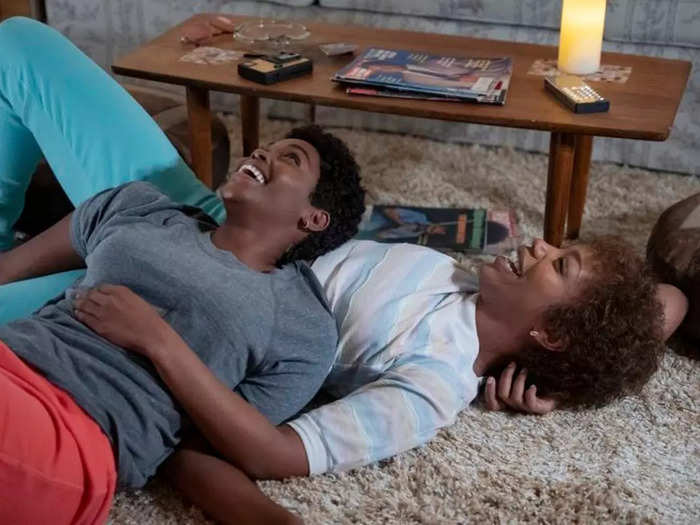
Whitney Houston and Robyn Crawford's complex relationship spanned nearly 20 years, enduring secrecy, joys, and hardships.
But when the two met as teenagers, Houston had yet to become a global phenomenon and Crawford had yet to become her lover-turned-best friend.
As "I Wanna Dance with Somebody" portrays it, Crawford introduced herself to Houston on the steps outside a building in East Orange, New Jersey.
In reality, it was Houston who introduced herself to Crawford in 1980 while they were youth counselors at the East Orange Community Development Center, according to journalist Gerrick Kennedy, author of the biography "Didn't We Almost Have It All: In Defense of Whitney Houston."
"It was a bond that formed almost immediately, and they were inseparable that summer. If you saw one, you saw the other," Kennedy wrote.
While Houston and Crawford's relationship was initially sexual, Houston ended the physical aspect when she presented Crawford with a bible one day in 1982.
"She said we shouldn't be physical anymore, because it would make our journey even more difficult," Crawford wrote in her book "A Song For You," adding, "She said if people find out about us, they would use this against us. And back in the '80s, that's how it felt."
Crawford, however, remained Houston's executive assistant and best friend for years, weathering rumors and tabloid headlines until quitting in 2000.
"I loved her, and there was nothing I felt was wrong about loving her," Crawford told The Guardian in 2019. "And she was loving me for me. I didn't have to do anything. That's where friendship is supposed to be. We were connected."
Whitney Houston sang along to a pre-recorded version of "The Star Spangled Banner" at Super Bowl XXV in 1991.

Ask most people whose rendition of "The Star Spangled Banner" reigns supreme, and they'll probably say, "Whitney Houston's."
"Her transcendent voice — the one that effectively voided all other versions of 'The Star-Spangled Banner' — had the capacity to lift, cradle, and soothe," wrote Helena Andrews-Dyer of The Washington Post.
By 1991, when Houston sang the national anthem at Super Bowl XXV, the singer was approaching the pinnacle of her career, just one-and-a-half years shy of the release of "The Bodyguard." Her plush, powerful voice was in its prime.
In "I Wanna Dance with Somebody," Houston phones her mother Cissy afterward, asking her simply, "Did I do good?"
While Houston's performance was unequivocally historic, she actually sang into a dead mic while the stadium audience and TV viewers heard a pre-recorded track that day, according to national anthem producer Rickey Minor.
"There's no way to rehearse the sound of the crowd coming at you," Minor told ESPN years after Houston's performance. "You don't know where the first note begins."
Houston would receive flak for singing along to a prerecorded track — a criticism she later put to rest when she sang the national anthem live later that year during a televised concert to raise funds for soldiers fighting in the Persian Gulf War.
Bobby Brown asked Houston out on their first date, not the other way around.
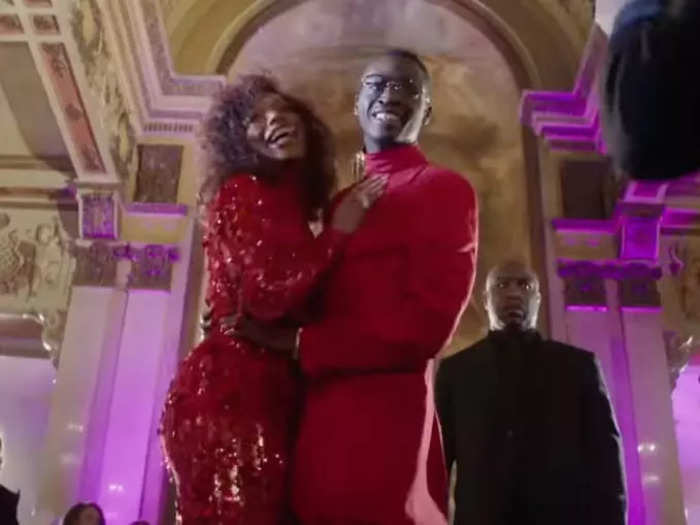
While Houston and Brown's relationship — and eventual marriage — would prove a convoluted one, it started simply enough at the 1989 Soul Train Awards.
In the film, Houston bumps Brown's head with her purse several times in the audience area as he's seated to get his attention. She then gives him her number on a business card.
But according to Brown, the flirtations actually occurred backstage at the awards ceremony.
"Whitney walked up and was bumping me," Brown said during A&E's "Biography: Bobby Brown." "She just kept bumping me. I turned around, and I said, 'You know you keep bumping me.' She said, 'I know.'"
"From there it was just love at first sight. Something about her eyes made me melt inside. I said, 'If I ask you on a date, would you say yes? She said, 'Of course,'" Brown added.
Unlike in the movie, Houston actually rejected Brown's first marriage proposal.
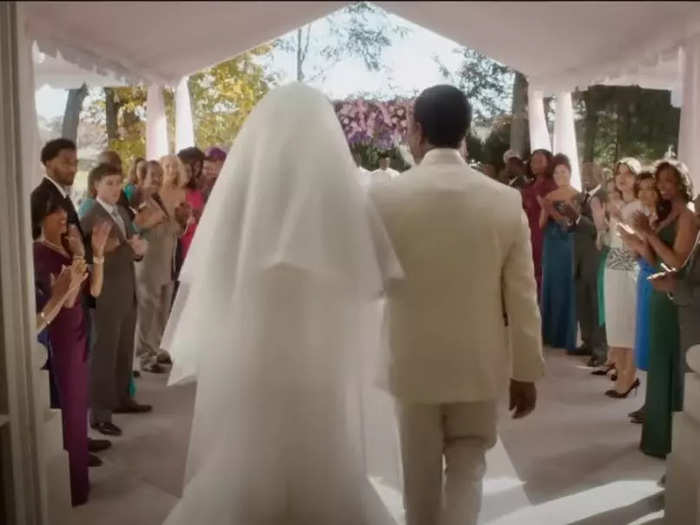
When it came to marriage, Houston was apparently hard to pin down.
In the film, the singer was quick to say, "Yes," despite Brown springing an impromptu confession on the singer that his ex-girlfriend was pregnant with his child.
But in real life, Houston told Rolling Stone, she initially rejected Brown's proposal.
"The first time he asked me to marry him, I said: 'Forget about it, no way,'" she said. "'It's just not in my plans.' After a year or so, I fell in love with Bobby. And when he asked to marry me the second time, I said 'yes.'"
Houston and Brown were married in front of nearly 800 people at her five-acre, $11 million New Jersey mansion in July 1992.
The singer donned a $40,000 French lace gown courtesy of Marc Bouwer, according to InStyle.
The movie doesn't address Houston's drug overdose from when she was filming "Waiting to Exhale."
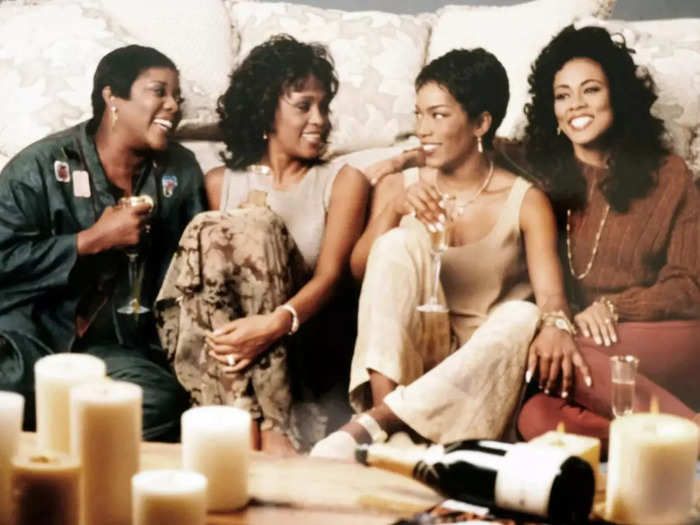
While "I Wanna Dance with Somebody" doesn't avoid Houston's drug addiction, the PG-13 film doesn't cover the full extent of her drug use over the course of her life.
Houston, who started using drugs as a teen with her brothers in New Jersey, carried that drug use into adulthood.
And as her career skyrocketed and the pressure to succeed and maintain a perfect image mounted, she escaped to harder drugs more and more.
By 1993, after her daughter Bobbi Kristina Houston Brown was born, she began lacing her joints with cocaine and spending her days getting high with Brown.
Two years later, while filming "Waiting to Exhale," she overdosed on set. And by the time she was filming "The Preacher's Wife" with Denzel Washington in 1996, doing drugs was an "everyday thing," she later told Oprah in 2009. "I was losing myself," Houston added.
In the film, Houston's drug use is certainly addressed, but it's viewed as a problem that spiraled out of control in the late 1990s and early 2000s.
In fact, "Waiting to Exhale" and "The Preacher's Wife," which seem to be crucial moments for Houston's drug use, aren't in the film at all.
Houston entered rehab at least three times from 2004 to 2011, but the movie portrays this journey differently.

It's difficult to cram Houston's entire life and work into a two-hour-and-26-minute film, so it's no surprise some events are either left out entirely or streamlined for the sake of time.
In the case of Houston's rehab, "I Wanna Dance With Somebody" makes the singer's four-month recovery stint look like a one-time affair.
But in truth, Houston was in and out of rehab at least three times from 2004 to 2011, according to MTV News.
Despite her visits to rehab, Houston would continue to battle drugs until her untimely death in February 2012.
"I Wanna Dance With Somebody" plays down the friction between Crawford and Brown, who actually really "hated each other" for a long time.

In the movie, only one scene sees the two characters bicker before they pose an ultimatum to Houston and make her choose between the two.
Brown, of course, wins, while Crawford quits her job and storms out of the room.
In truth, Crawford and Brown "hated each other" for a long time, Houston's former bodyguard David Roberts said in the documentary "Whitney: Can I Be Me," explaining that the two "were like fire and ice."
Roberts added: "They'd battle for her affection. Bobby and Robyn had some physical altercations, and there were times where he wasn't always the winner. But then Whitney would always come and pour oil over troubled waters."
Unlike how it plays out in the movie, Whitney Houston ultimately forgave her dad for trying to sue her for $100 million.
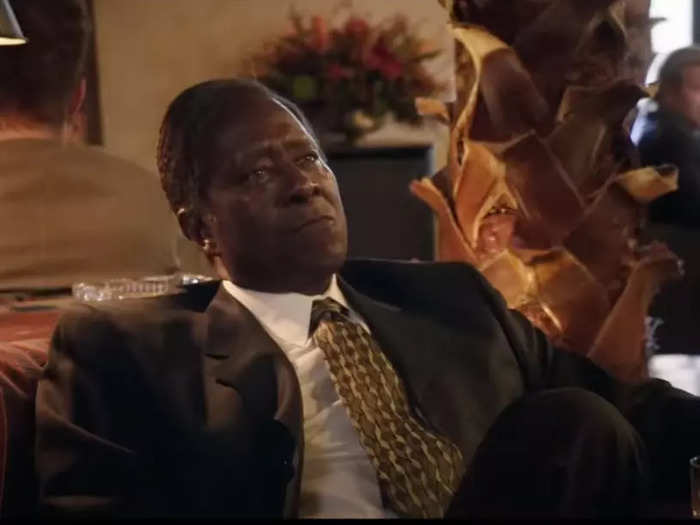
To say Houston and her father had a complicated relationship would be an understatement.
Houston's father managed her mother's vocal group, the Sweet Inspirations, before eventually becoming Houston's business manager and CEO of her management company, Nippy Incorporated.
Their relationship eventually devolved, however, and Houston's father attempted to sue Whitney for $100 million for his help in negotiating her a $100 million record deal with Arista and other management services, which included straightening out a legal mess around a pot bust at a Hawaii airport.
In the film, the singer's sickly father threatens Houston from his hospital bed, grabbing her before she pushes him away and leaves. The next scene abruptly cuts to his cemetery burial.
But in reality, the two were quite public about the lawsuit.
"You get your act together honey, and you pay me the money that you owe me," Houston's father told the syndicated TV show "Celebrity Justice" in 2002. "If you do that, you haven't got a lawsuit."
On ABC's "Primetime" with Diane Sawyer, Houston replied, "They'll never get $100 million out of me. I know that."
Houston later said the two eventually made up.
"There were years we didn't speak at all, but when he got sickly, I went to the hospital and I said, 'let's end this right now,'" she told Oprah in 2009, clarifying that she forgave her father.
"I had a memorial the day before the funeral," Houston added. "That was my own. It was so much press, and the media was following me around, I couldn't grieve in privacy."
Houston's "entire appearance" changed by the time of her death in February 2012.

As Houston matured, her hard drug use took a significant toll on the singer and former model's appearance.
"Her entire appearance changed," said Nick Broomfield, the documentarian behind 2017's "Whitney: Can I Be Me," told The Irish Times. "She lost all her teeth. Her mouth and her face changed completely. She looked like a different person. And in my mind, it was clear which part of her life was more interesting. I didn't dwell on her life at the end, because I couldn't, I didn't want to see it. It was just too sad."
"I Wanna Dance With Somebody" takes a much kinder approach to Houston's appearance.
In fact, besides numerous hairstyle changes, actor Naomi Ackie doesn't age at all in the film from Houston's teens through her death at age 48.
Houston's star-studded funeral didn't make the cut.
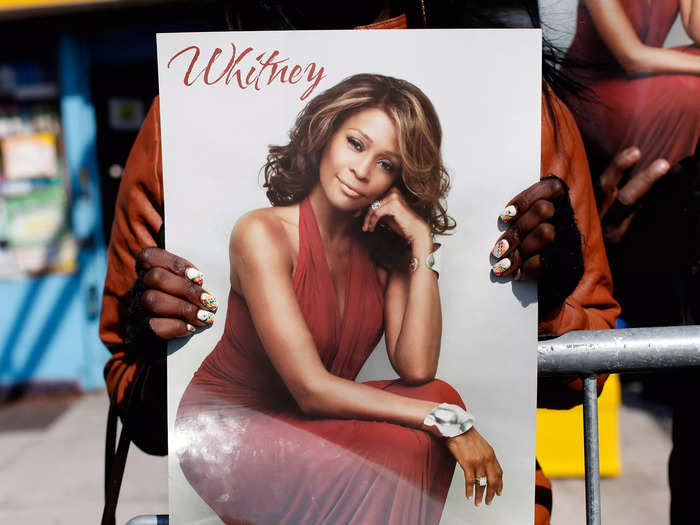
While "I Wanna Dance With Somebody" chooses to end on an exultant note — Houston's difficult medley at the 1994 American Music Awards — the singer's real-life exit, her funeral at New Hope Baptist Church in Newark, New Jersey, was in some ways, no less memorable.
Attended by Oprah Winfrey, Mary J. Blige, Mariah Carey, Stevie Wonder, Alicia Keys, and others, the ceremony paid homage to Houston, who many will consider for years to come as the voice of a generation.
"You wait for a voice like that for a lifetime," Houston's longtime mentor and former Arista president Clive Davis said at the ceremony. "You wait for a face like that, for a smile like that, for a presence like that for a lifetime. And when one person embodies it all, well, it takes your breath away."
Actor Kevin Costner, Houston's costar in the 1992 film "The Bodyguard" perhaps gave the most moving eulogy for Houston that day.
"You weren't just pretty — you were as beautiful as a woman could be," he said. "And people didn't just like you, Whitney — they loved you."
"So off you go, Whitney, off you go, escorted by an army of angels to your Heavenly Father," he continued. "And when you sing before Him, don't you worry — you'll be good enough."
Popular Right Now
Advertisement